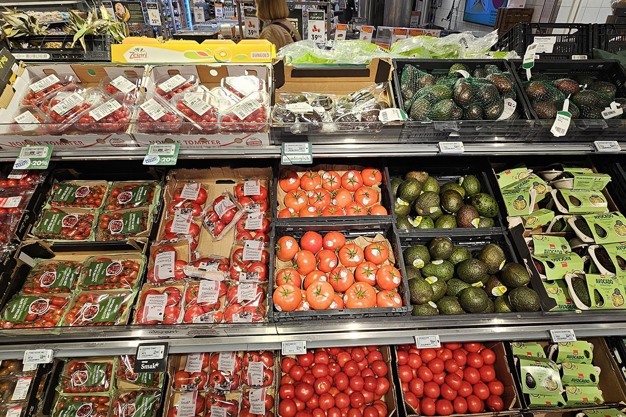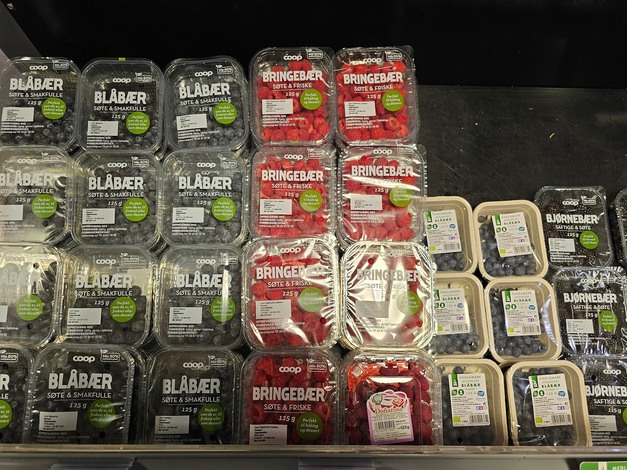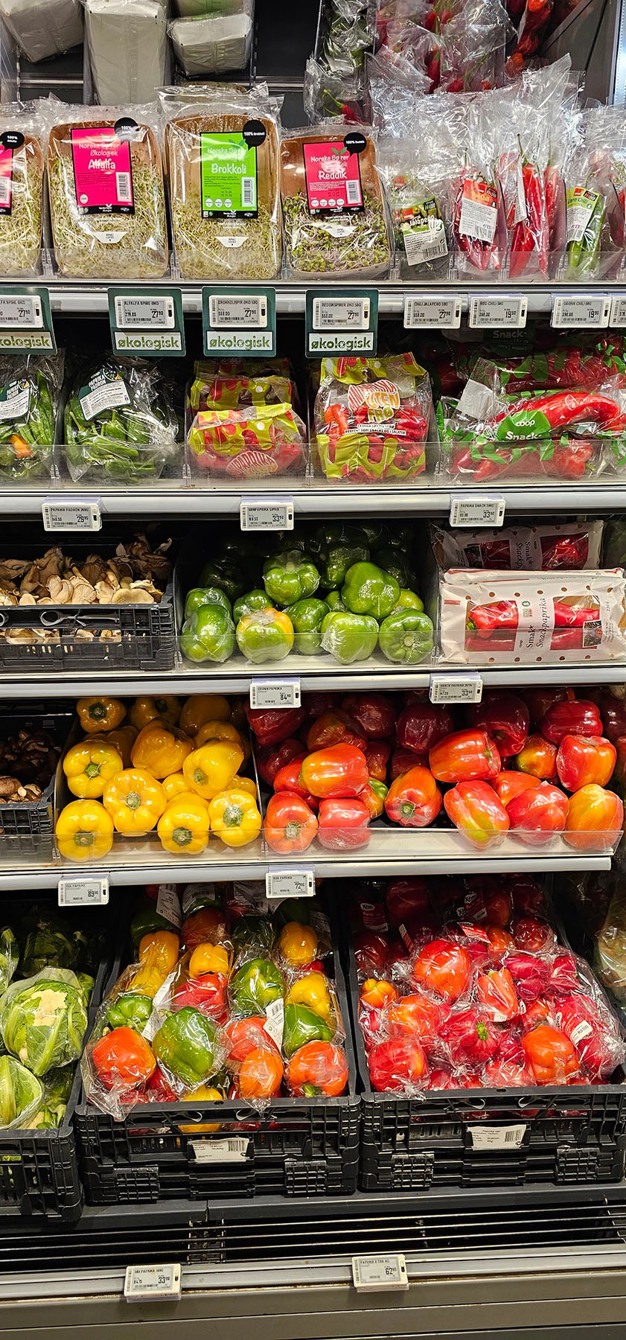The Norwegian retail market is highly concentrated and dominated by a few large supermarket chains, with NorgesGruppen, Coop, and Reitangruppen being the biggest players. Together, these three groups control almost 95% of the market. NorgesGruppen has the largest market position, with around 44% market share, and operates the Kiwi, Meny, Joker, and Spar chains, among others. Kiwi is their discounter and one of the most popular budget supermarkets in Norway. Coop follows with a market share of around 29%, with chains such as Coop Extra (their discount brand), Coop Mega, and Coop Obs! Rema 1000, a discount chain under Reitangruppen, has a 23% market share and is also very popular.
Click here for the photo report

Discounters
Discounters play a big role in Norway, as the market is strongly focused on price-conscious consumers. This explains the success of chains like Kiwi, Rema 1000, and Coop Extra, which compete on low prices and have seen their market share increase in recent years. There are also discounters such as Europris, which offer, not only food but also household products, and are performing well in the Norwegian market.
Fresh produce expensive
In Norway, prices for fruit and vegetables are the highest in Europe, often 63% above the EU average, and even 40% higher than in neighbouring Sweden. These high prices apply to many basic products, such as vegetables, fruit, dairy, and meat. Reasons include Norwegian import duties that protect local producers and the weak Norwegian krone, which makes imports more expensive. In addition, high operational costs such as energy and transport costs contribute to these price levels
Although prices are high, Norwegian households spend relatively less of their income on food (about 11%) than on average in Europe, which is partly possible thanks to high incomes in Norway. Discounters such as Kiwi and Coop Extra play a big role in the budget segment, but even at these shops prices are still high compared to other European countries.

Local fresh produce
Locally grown fruit and vegetables are gaining importance in Norway, driven by sustainability and food security. The Norwegian government and agricultural sector are actively working to strengthen local production, especially to reduce the ecological footprint and dependence on imports. Initiatives such as new cultivation methods (e.g. hydroponics and greenhouse production) and shorter, direct sales chains encourage this growth. This is further supported by the use of social platforms such as REKO rings, where consumers can buy directly from local farmers, reinforcing confidence in product quality.

Nevertheless, self-sufficiency remains relatively low, especially for products such as fruit. The pursuit of local production is often constrained by the short growing season and high labor costs. Nevertheless, sustainable agricultural practices and food security plans are on the rise, indicating a rising demand for locally grown produce in response to climate change and geopolitical uncertainties, which make the food supply vulnerable.
The current exchange rate of the Norwegian krone (NOK) against the euro is around EUR0.084 per NOK, equivalent to about NOK11.90 for EUR1. For the US dollar, the exchange rate is around 0.091 USD per NOK, meaning that 1 USD equals around 10.96 NOK. These exchange rates fluctuate regularly due to changes in the market and the influence of currencies such as the euro and the dollar on the Norwegian krone.











